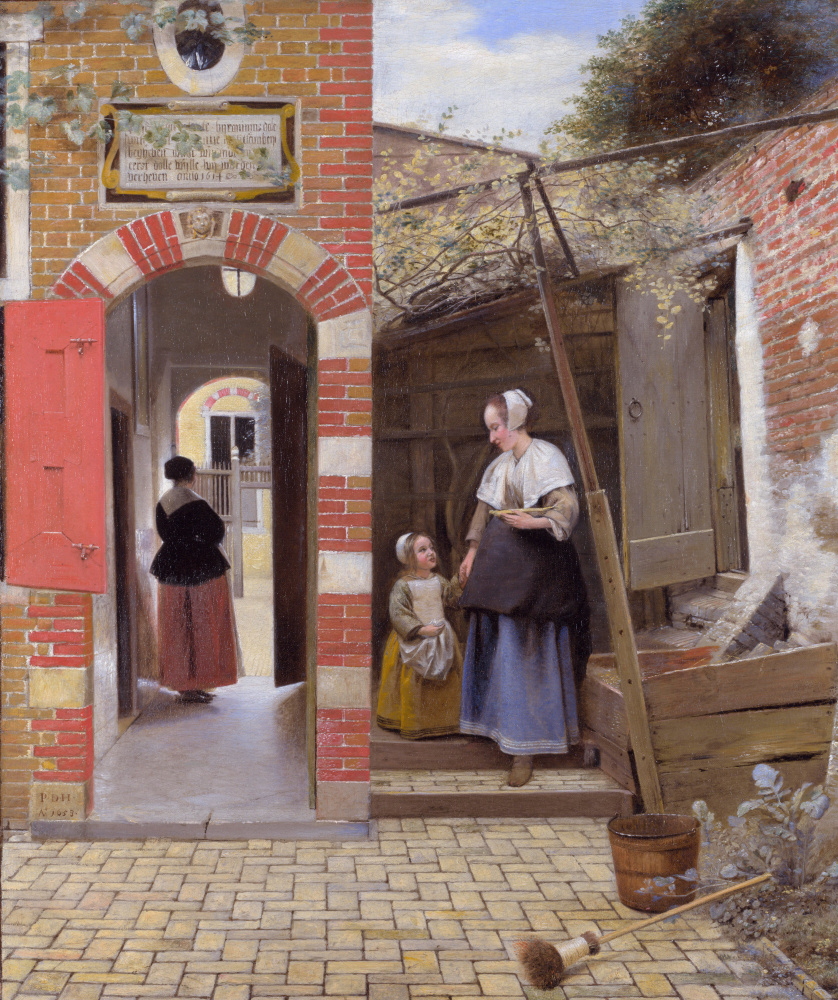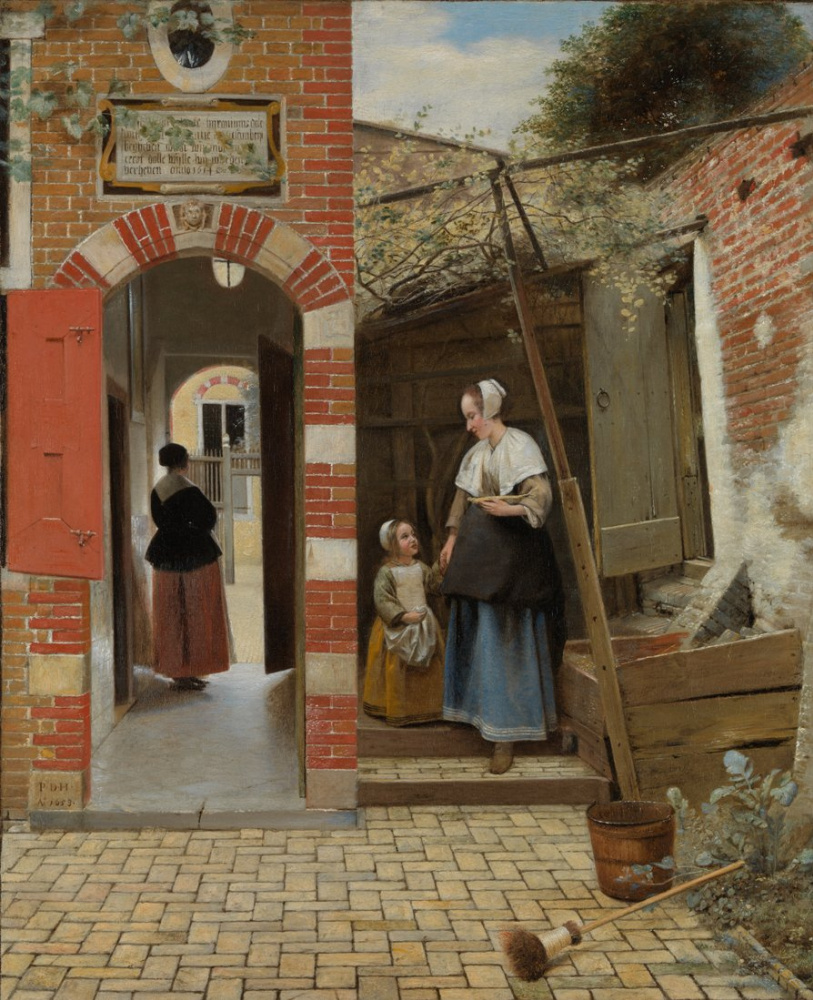log in
Enter site
Login to use Arthive functionality to the maximum
Courtyard in Delft
Pieter de Hooch • Painting, 1658, 73.5×60 cm
Description of the artwork «Courtyard in Delft»
Everyday activities of women and children were a favorite motif of Pieter de Hooch. Such scenes belongs "Courtyard in Delft" from the collection of the National gallery in London. This is one of several works with signature and date. The artist created her at the peak of creativity, in 1658, approximately three years before moving to Amsterdam. In the picture there is a link to style Johannes Vermeerand Nicolas Mas.
The main character of this picture – a mother with a dish in hand and a girl – passionate affectionate conversation with each other. Another woman, a minor character, standing in the aisle with his back to the viewer, looking at the street from under the arches. De Hooch had paid more attention to the fragments of architecture, rather than human figures. In the picture there are several elements that contradict the General sense of harmony. The wall of the passage in the center of the composition separates the well-preserved house on the left from running and oblepicha garden walls on the right. Nature invades human life in the form of a Bush of the arbor over the heads of mothers and girls, as well as vines, partially concealing the inscription above the arch.
Plaque above the arch is of particular interest. Originally it was crowned by the entrance to the monastery of Hieronimyte in Delft. When the monastery was broken up, the stone plate inserted in the wall of a house. The text on it reads:
"In this valley of St. Jerome
Seeking patience and gentleness
Have to first come down
To be lifted up".
In 1908 the Dutch art-historian Hofstede de Groot described this painting as "a View of the courtyard of the former monastery of Hieronimyte in Delft". And the Irish poet and translator Derek Mahon dedicated to her the poem in 1981.
It should be noted that the same elements of the courtyard, the artist has depicted in his other picture, dated the same year "Two men and a woman in the gazebo" (in 1992 it was sold to a private collector at Christie's auction for seven million dollars). There is also present an arch of red and yellow brick, red shutters to the left and a small alcove on the right, where the company were seated. However, this recess is located flush with the rest of the yard, instead of sloping the roof of the house visible behind the trees, the courtyard is paved with different tiles, and the street archway has a completely different look.
These differences confirm the words of Peter Sutton, author of the catalogue of the works of de Hooch, that the artist did not depict real places. His works are largely a figment of the imagination and the ability to build a composition from fragments of real interiors and landscapes.
Author: Vlad Maslov
The main character of this picture – a mother with a dish in hand and a girl – passionate affectionate conversation with each other. Another woman, a minor character, standing in the aisle with his back to the viewer, looking at the street from under the arches. De Hooch had paid more attention to the fragments of architecture, rather than human figures. In the picture there are several elements that contradict the General sense of harmony. The wall of the passage in the center of the composition separates the well-preserved house on the left from running and oblepicha garden walls on the right. Nature invades human life in the form of a Bush of the arbor over the heads of mothers and girls, as well as vines, partially concealing the inscription above the arch.
Plaque above the arch is of particular interest. Originally it was crowned by the entrance to the monastery of Hieronimyte in Delft. When the monastery was broken up, the stone plate inserted in the wall of a house. The text on it reads:
"In this valley of St. Jerome
Seeking patience and gentleness
Have to first come down
To be lifted up".
In 1908 the Dutch art-historian Hofstede de Groot described this painting as "a View of the courtyard of the former monastery of Hieronimyte in Delft". And the Irish poet and translator Derek Mahon dedicated to her the poem in 1981.
It should be noted that the same elements of the courtyard, the artist has depicted in his other picture, dated the same year "Two men and a woman in the gazebo" (in 1992 it was sold to a private collector at Christie's auction for seven million dollars). There is also present an arch of red and yellow brick, red shutters to the left and a small alcove on the right, where the company were seated. However, this recess is located flush with the rest of the yard, instead of sloping the roof of the house visible behind the trees, the courtyard is paved with different tiles, and the street archway has a completely different look.
These differences confirm the words of Peter Sutton, author of the catalogue of the works of de Hooch, that the artist did not depict real places. His works are largely a figment of the imagination and the ability to build a composition from fragments of real interiors and landscapes.
Author: Vlad Maslov



